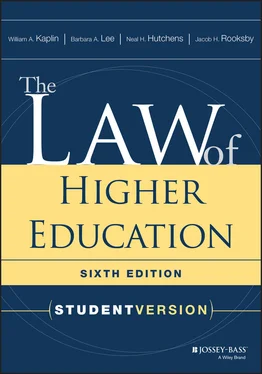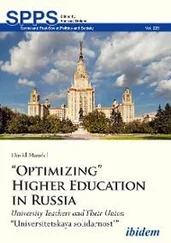Arbitration clauses are appearing in student enrollment agreements, particularly those used by for-profit proprietary schools. To date, most students who have signed such agreements, but who have then attempted to avoid arbitration and pursue class action claims for fraud, breach of contract, and other state law claims, have been unsuccessful. The decision of the U.S. Supreme Court in AT&T Mobility v. Concepcion , 563 U.S. 333 (2011), which ruled that arbitration clauses containing waivers of class action claims, both in court and in arbitration, were not preempted by the Federal Arbitration Act, is in large part responsible for this lack of success. For example, in Miller v. Corinthian Colleges, Inc ., 769 F. Supp. 2d 1336 (D. Utah 2011), and Montgomery v. Corinthian Colleges, Inc ., 2011 U.S. Dist. LEXIS 31651 (N.D. Ill. March 25, 2011), students who had enrolled at Everest College, owned by Corinthian Colleges, signed arbitration agreements that not only limited the students to arbitration in the event of a dispute but also included a waiver of their right to file class action lawsuits or demands for arbitration. The students later attempted to bring class action lawsuits against Corinthian under state consumer protection laws for allegedly deceptive practices and promises. In both cases, federal trial courts ruled that the arbitration clauses were valid and that the only remedy was individual arbitration. See also Bernal v. Burnett and Westwood College , 793 F. Supp. 2d 1280 (D. Colo. 2011) (same result).
Students in one case had some success escaping the arbitration clause they had signed. In Rude v. NUCO Education Corp ., 2011 Ohio App. LEXIS 5605 (Ohio Ct. App. December 30, 2011), a state appellate court ruled that an arbitration clause in the enrollment agreement of a nursing school was both procedurally and substantively unconscionable as a contract of adhesion. But in Best v. Education Affiliates, Inc ., 82 So.3d 143 (Fla. Dist. Ct. App. 2012), the court ruled that the arbitrator, not the court, must determine whether the enrollment agreement's arbitration clause was invalid because of its limits on remedies for students.
Faculty and administrators should carefully weigh the benefits and challenges of ADR systems when considering whether to implement such innovations as mediation, arbitration, or the creation of a campus ombudsperson. Although these systems are useful in channeling disputes away from the courts, they require extensive internal processes, additional staff, and careful adherence to procedural requirements in order to be effective.
Section 2.4. Institutional Management of Liability Risk6
2.4.1 Overview and suggestions.The risk of financial liability for injury to another party remains a major concern for postsecondary institutions as well as their officers, faculties, and other personnel. This section examines various methods for managing such risk exposure and thus minimizing the detrimental effects of liability on the institution and members of the campus community. Risk management may be advisable not only because it helps stabilize the institution's financial condition over time but also because it can improve the morale and performance of institutional personnel by alleviating their concerns about potential personal liability. In addition, risk management can implement the institution's humanistic concern for minimizing the potential for injuries to innocent third parties resulting from its operations and for compensating any such injuries that do occur.
The major methods of risk management may be called risk avoidance, risk control, risk transfer, and risk retention. For risk transfer, there are three subcategories of methods: liability insurance, indemnity (or “hold-harmless”) agreements, and releases (or waivers).
Institutions should find it helpful to develop these various methods of risk management, and strategies for their implementation, into a campus risk management plan. A key component of any such plan is a professional risk manager or an office of risk management that provides a focal point for the institution's risk management efforts. The institution's legal counsel should also be involved in all phases of risk management. Another helpful organizational device would be an institution-wide risk management team or committee, which may also include school-level or division-level coordinators or teams. Risk assessment should be an essential aspect of any risk management plan. For some institutions, external consultants may be an important source of assistance in undertaking a comprehensive assessment of institutional risks or periodically updating this assessment. Risk assessment teams from within various sectors of the institution may also be helpful. (For additional guidance and resources, see the website of the University Risk Management and Insurance Association, at http://www.URMIA.org.)
The tragic effects of Hurricane Katrina on New Orleans, Louisiana, and its higher education institutions have served to cast a spotlight on the intricacies of property insurance and its role in institutional risk management. A group of cases consolidated under the title In Re: Katrina Canal Breaches Litigation provides a striking example. The cases were all lawsuits against insurance companies that had refused to pay claims for property damages resulting from Katrina and the failure of the New Orleans levees. One of the plaintiffs, Xavier University, alleged that it had suffered damages in excess of $30 million and sought recovery under its commercial “all-risk” property insurance policy ( Xavier University of Louisiana v. Travelers Property Casualty Co. of America , 495 F.3d 191 (5th Cir. 2007)). In the Xavier case and the other cases consolidated with it, the insurance companies argued that damages caused by “flood” were specifically excluded from the plaintiffs' policies. The plaintiffs argued “that the massive inundation of water into the city was the result of the negligent design, construction, and maintenance of levees and that the policies' flood exclusions in this context are ambiguous because they do not clearly exclude coverage from an inundation of water induced by negligence.” In a complex opinion, the federal appellate court drew upon the law regarding insurance contracts, rules for construing contact terms, cases on flood exclusion clauses, other cases on water damage claims, and various sources containing definitions of “flood.” On this basis, the court rejected the plaintiffs' arguments, saying the cause of the levees' failure did not change the fact that the resulting escape of waters was a flood, which was specifically excluded from the plaintiffs' policies (495 F.3d at 221).
2.4.2 Risk management strategies.The most certain method for managing a known exposure to liability is risk avoidance —the elimination of conditions, activities, or programs that are the sources of the risks. This method is often not realistic, however, since it could require institutions to forgo activities important to their educational missions. It might also require greater knowledge of the details of myriad campus activities than administrators typically can acquire and greater certainty about the legal principles of liability (see Sections 3.2– 3.4and 4.4) than the law typically affords.
Risk control is less drastic than risk avoidance. The goal is to reduce, rather than eliminate entirely, the frequency or severity of potential exposures to liability—mainly by improving the physical environment or by modifying hazardous behavior or activities in ways that reduce the recognized risks. Although this method may have less impact on an institution's educational mission than would risk avoidance, it may similarly require considerable detailed knowledge of campus facilities and functions and of legal liability principles.
Читать дальше












